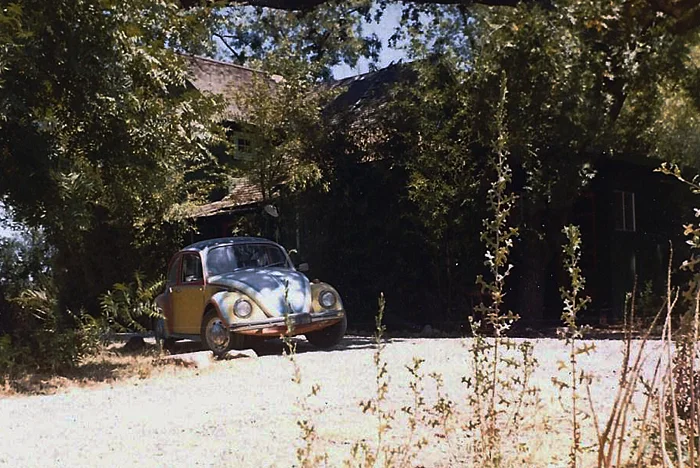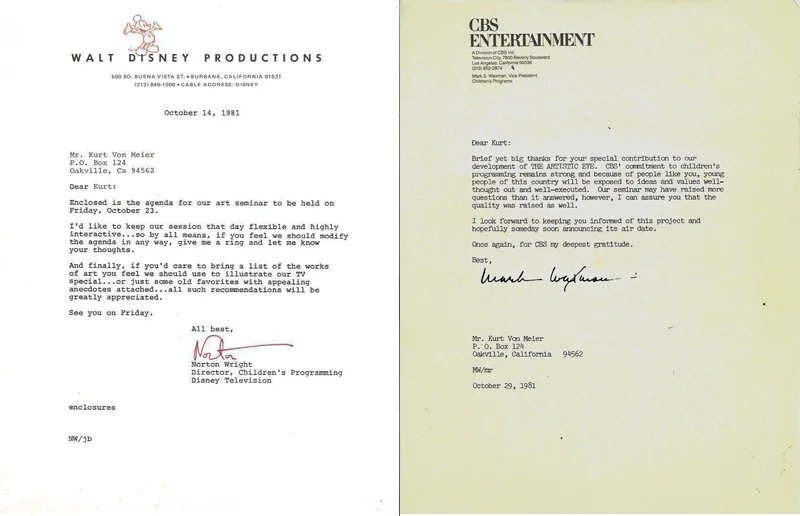By 1975 Kurt was immersed in, perhaps obsessed with, G. Spencer Brown's book Laws of Form. Accordingly, he developed a proposal for a course by that title to be offered at Sacramento State University. In his proposal, he states: "Our hypothesis is that "Laws of Form" is a useful tool for integrating academic disciplines. The calculus is the mathematics of form. (It is non-numerical--no messy numbers to add up wrong.) It may be applied in any discipline, since it is the unifying principle behind the various disciplines. It transcends the form of many distinctions by taking distinction itself as the form. This is one way to recombine the multiversity into a university." Kurt's proposal was accepted and the course taught in 1975; the bibliography alone is stunning and provides insight into the depth of Kurt's base of knowledge and library. Audio tapes of the course lectures and discussion were recorded and the first lecture in the course is available.
John Lilly's Sensory Deprivation Flotation Tank
Kurt Revisits New Zealand - 1983
Kurt managed to get newspaper coverage easily, such as this article in The Daily Post from 1983, when he revisited New Zealand during his sabbatical leave. Kurt had taught art history for two years at the University of Aukland after graduating from Princeton with his Master’s Degree. The full text of the article is available.
UCLA's Rock-Star Professor
In 1967 Kurt garnered the attention of KRLA BEAT, a radio station newspaper focused on the growing music scene. Their archive is now online, and in their current blog they note: "on page 13 is the curious news that the KRLA Beat was required reading at UCLA. Prof. Kurt von Meier, a polymath and enthusiast about mathematics, cosmology, and world culture, was teaching an art history course that was far ahead of its time. The Beat, he recognized, was a unique source of news about pop music and poular culture. "Here at home" he said to the Beat "we have some of the most meaningful poetry of the 20th century, put to music by Bob Dylan and Chuck Berry. It's also amazing to see how the Beatles continue to revolutionize their industry — their genius cannot be denied." I'm with him!" The entire article is available here.
Sur Collages by Jimi Suzuki
In 1991, Kurt's friend and fellow professor at Sacramento State University artist Jimi Suzuki exhibited his collages at the Henry Miller Memorial Library in Big Sur, California. Kurt wrote an essay to accompany the exhibition, and though he had long since stopped writing art criticism articles for publication, he clearly enjoyed returning to form to honor his friend and his work. It is a typically engaging and surprising essay, and well worth reading. (We are attempting to secure copies of the images discussed in the article. The one above is representative of Jimi's collage work).
Judging Sculptor Bruce Naumann's "Dark"
Kurt was chosen to judge a commission competition at Southwestern College in the early 1960s, and selected Bruce Nauman, then at the beginning of his career, for the award. "The outstanding piece of sculpture in the current competitive exhibition at Southwestern College is the project by Bruce Nauman titled 'Dark.' It it outstanding, first of all, in terms of its INTRINSIC QUALITY."
The decision was controversial, and Kurt penned a defense of his decision for the college newspaper. The controversy continues; a link from an article in that same newspaper in 2015 can be found at the conclusion of Kurt's comments.
"Smitty" the Space-Mouse
Kurt started writing early. An article in The Carmel Pine Cone notes "At the age of 11 Kurt von Meier was editor and publisher of "Carmel Quack" and sports reporter and author of the cartoon strip "Smitty the Space-Mouse," which ran in the "Spectator" in 1947. In his cartoon strip (found in a childhood scrapbook), Kurt's already playing off Disney's iconic "Micky Mouse" and displaying his sense of humor with characters like "Prof. Schmaltz."
Kurt and Zappa
Yes, that is Frank Zappa in the Polaroid photo above (the guy hugging him is not Kurt). In November of 1966, Professor von Meier organized the opening of a Harold Paris sculpture exhibit. Unfortunately, the sculpture was not available, but Kurt nonetheless managed to turn the event into an "installation" rather than an "exhibition." There were bands, including Zappa's Mothers of Invention, plus Canned Heat and other rock and roll groups. And a light show. And films. And all at the same time. As the article below from the UCLA Daily Bruin notes, it all "had a strange influence on the people there." As Kurt might say, "Ah, well."
Female Warriors: Memorial remembers women at war
When Kurt found out that applications were being accepted for the design of a memorial dedicated to female warriors in the military, he jumped at the opportunity to make a submission, and enlisted a number of senior students to help with the application. His efforts received newspaper attention, and though his design concept was not chosen, he and his students had the opportunity to delve deeply into symbolism, mathematics, memorials and design.
An Interview with Arman
Armand Pierre Arman (1928-2005), "Arman", was an American artist born in France. In his work - sculptures, prints, assemblages and paintings - he used everyday objects, embedding some in clear plastic (above). In this respect, he explored ideas pioneered by Marcel Duchamp, which naturally attracted Kurt's attention. In 1969, Kurt went to New York to meet with Arman; he interviewed him, brought him a gift, and talked about working on a book together. The transcript of the recording of Kurt's interview, a description written by Kurt of the gift he brought, and a slip of yellow paper describing, briefly, the contemplated book project are available.
High School Report Card 1951
Kurt's Report Card from senior year at Carmel High School contains little in the way of surprises; he was an excellent student, "Best Student in class" notes Dr. Craig. His lowest grade was in Citizenship, which earned a First Quarter comment: "fooling around." Sounds familiar.
The Auto da Fe of Jose Que
As provocateur stand-in for "artist-revolutionary" Jose Que, Kurt lit up the UCLA campus and the local press when as part of the Festival of Experimental Arts he set a tower of books on fire before a crowd of students. Of all his public acts as a professor, it was undoubtedly the most dramatic; a flood of commentary followed and the event may well have contributed to the non-renewal of Kurt's teaching contract. It's a fascinating story filled with mystery, creativity and confusion.
Kurt von Meier - Chili Guru for the Day
Kurt's love of chile peppers knew no bounds. He loved to cook with them, study them, find new varieties and wear shirts printed in chili pepper designs. He entered a chili-cooking content and Kurt was declared "chili guru for the day" by the Napa Register in its newspaper coverage of the Chili contest at the Napa Town and County Fair's 50-year Golden Jubilee, held on August 9, 1980. The coverage is a hoot.
Kurt responds to SF Chronicle columnist Leah Garchik
Always curious, Kurt poured over the daily paper, what he sometimes referred to as the San Francisco "Comical." He read the news articles, but also read the funnies and the "Personals" column by Leah Garchik. Above is her reaction and response to Kurt's remarkable and pithy commentary on her snippet referring to Sandra Day O'Connor (Supreme Court Justice) caught on camera giving "bunny's ears" or "horns" to a fellow justice. His entire commentary is available here and well worth reading, as Leah's reply amply indicates. Web links have been created for the varied references in Kurt's epistle.
Kurt Sees the White Light
When Kurt von Meier was 55-years-old he suffered a major heart attack and had by-pass surgery. Having come through the procedure successfully, the post-surgery photo above shows him looking pretty happy. In his inimitable fashion, his memory and thoughts of his close encounter with death are candid and uniquely his own. He suggested his surgeon wait a week to operate until the equinox, but his idea was declined. "We really don't have time to squander; I'm a busy man," his surgeon replied.
Kurt's Diamond Sufi Ranch
The Diamond Sufi Ranch was located in Oakville, in the Napa Valley. It was owned by Bill Hamm, of the Hamm's Beer family, and Kurt leased the property for many years. The 3-bedroom main house on the property, pictured above with Kurt's psychedelic VW Bug in the circular driveway (under the 700-year old Valley Oak), was actually the caretaker's house. A much larger estate home had burned down long before Kurt took up residence. Other buildings remained on the property, which was in walking distance from the Napa River. A stable housed Misty Moonlight, the ranch horse, and the stable had one small living unit in it. An enclosed pool house was across the grove of timber bamboo (Phyllostachys bambusoides) at the rear of the main house, and it also contained a small, living unit. The same was true of the garage/barn, where artist Noble Richardson spent many hours painting.
The configuration of places to live lent itself to communal life, and a number of people took up residence for periods of time. This resulted in big dinners, orchestrated by Kurt, of course, served around the kitchen table or on the back deck. And there were kids, too. At one time a pack of 4-year-old blonde toddlers ran the ranch.
The Diamond Sufi ranch became a gathering place for thinkers, artists and an odd assortment of healers, yogis, body workers, massage therapists, students and musicians. People were always dropping by, including notables like Alan Watts and Tibetan Buddhist Lamas, including Lama Chime of the Kagyu lineage, who renamed the ranch Samten Chöling.
During the summer, a Native American-style sweat lodge was built from bent bamboo and coverings; rocks would be heated during the night, and at sunrise placed in the sweat lodge and doused with water to produce hot steam. A quick dash to jump into the cool water of the indoor pool closed the pores opened by the heat of the sweat lodge. For more information and photos read more.
The AUM Conference at Esalen - 1973
The Pacific Sun newspaper published an article by Clifford Barney about the AUM Conference. This illustration is by Tom Cervenak, and appeared on the cover; Brown is depicted in the center, Alan Watts is to the right and John Lilly is to the left.
G. Spencer Brown's book Laws of Form fascinated and preoccupied Kurt and his close friend Clifford Barney for years. One outgrowth of that was a conference held at Esalen, featuring von Meir, Barney, Brown and a gathering of distinguished scientists, gurus, health professionals, mathematicians. Articles and transcripts followed.
Kurt's youth and military service
Kurt and Joseph Campbell
Kurt (to the left, wearing the embroidered vest) greatly respected mythologist Joseph Campbell's work and writings. Campbell, like Kurt, saw patterns in mythology that crossed cultural boundaries and pointed to the essential unity of human experience and imagination. In this photo during an event in the early 70s, Campbell is sitting among the students at Sacramento State University..
Disney's "Artistic Eye" Project
In 1981, Walt Disney Productions and CBS Entertainment enlisted Kurt to help them in a project to connect the world of fine art to children, "to demystify art and make it relevant to our young audience...." Specifically, Kurt (along with other contributors) prepared remarks under the title "Turning youngsters on to art".



































